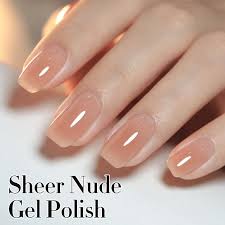Gel Nails: The Ultimate Guide to Long-Lasting, Stylish Manicures

1. Introduction to Gel Nails
Gel nails have taken the beauty industry by storm, offering a perfect blend of durability, style, and a glossy finish that lasts for weeks. Unlike traditional manicures that may chip within a few days, gel nails maintain their flawless appearance, making them a go-to choice for women and men who value polished, well-kept hands. Originating in the late 20th century, gel nail technology has evolved from basic overlays to intricate designs that push the boundaries of nail artistry.
The rise of gel nails is largely due to their resilience and the vast variety of designs they can accommodate. From subtle nudes to bold, statement-making patterns, gel nails can be customized to match personal style and seasonal trends. Another factor fueling their popularity is the minimal upkeep required between appointments, making them ideal for busy individuals.
In today’s world, gel nails are not just a beauty trend—they are a form of self-expression. Social media platforms like Instagram and Pinterest have amplified the trend, showcasing endless design possibilities that inspire millions worldwide. With proper application and aftercare, gel nails can remain a stunning addition to your look without causing long-term harm to your natural nails.
2. Types of Gel Nails
Gel nails come in several variations, each with its own set of benefits. Soft gel is flexible and best for temporary enhancements or natural-looking overlays. It’s great for those who want a lightweight feel and easy removal. Hard gel, on the other hand, is more rigid and can be used to create length and structure, making it ideal for people who prefer longer nails.
Builder gel is designed for creating strong, durable extensions. It can be sculpted into different shapes and is favored by professional nail technicians for its versatility. Gel polish, the most common type, is essentially regular nail polish with a gel-based formula. It applies like traditional polish but cures under a UV or LED lamp for a chip-resistant finish.
Knowing the differences between these types can help you choose the right one for your lifestyle and preferences. Whether you need a quick, elegant look for a special occasion or a long-term manicure solution, there’s a gel nail option that fits your needs.
3. How Gel Nails Are Applied
The application process for gel nails is meticulous, ensuring a flawless and long-lasting result. It begins with prepping the nails—this involves cleaning, buffing, and shaping to create an ideal surface for adhesion. The technician then applies a base coat, which is cured under a UV or LED lamp to lock it in place.
Next comes the application of the gel color or builder gel. This step requires precision to avoid touching the cuticles or skin, as this can cause lifting. Each coat is cured under the lamp to harden the gel and set the pigment. Finally, a top coat is applied to seal the design, add shine, and provide extra durability.
Hygiene is critical during this process. Sterilized tools and a clean working environment help prevent infections. Additionally, professional technicians follow safe curing times to reduce exposure to UV light, often recommending LED lamps as a quicker, lower-risk option.
4. Gel Nails vs. Other Nail Enhancements
Gel nails often get compared to acrylic nails. Acrylics are made from a liquid and powder mixture that hardens when exposed to air, while gels require curing under light. Acrylic nails tend to be stronger but may look less natural compared to gels. They can also emit stronger fumes during application, making gels a preferred choice for sensitive clients.
When compared to dip powder nails, gels offer a glossier finish and are easier to customize with intricate designs. Dip powder, however, can last slightly longer and doesn’t require curing. The trade-off often comes down to personal preference in appearance and feel.
Cost-wise, gel nails may be slightly more expensive than regular manicures or dip systems, but the investment pays off in longevity and style. For those who prioritize a natural look and comfort, gel nails are a clear winner.
5. Gel Nail Designs and Trends
Gel nails offer endless creative possibilities. Popular 2025 trends include chrome finishes, ombre gradients, and micro-French tips. Seasonal designs—such as pastel shades in spring or jewel tones in winter—remain in high demand. Event-based styles like bridal gel nails with delicate pearl accents or holiday-themed glitter designs also dominate social media feeds.
Social media platforms play a massive role in shaping gel nail trends. Influencers often experiment with bold color combinations, textured finishes, and even 3D embellishments that push artistic boundaries. This constant stream of inspiration ensures gel nails never go out of style.
One of the reasons gel nails stay trendy is their adaptability. You can switch between minimalist looks and extravagant designs depending on your mood or occasion, all while enjoying the same chip-free durability.
6. Maintenance and Aftercare
Maintaining gel nails requires simple yet consistent care. Daily habits, such as applying cuticle oil and wearing gloves while cleaning, can significantly extend their life. Avoid using nails as tools—this prevents unnecessary lifting or cracking.
Moisturizing is key to preventing dryness, especially around the cuticle area. Products containing vitamin E or jojoba oil work wonders. Also, try to schedule regular infill appointments every 2–3 weeks to maintain a fresh, polished look.
Proper aftercare ensures your natural nails remain healthy underneath the gel. A balanced diet rich in biotin and keratin can also strengthen nails, making them more resilient to repeated manicures.
7. Removing Gel Nails Safely
Professional removal is the safest method, as it minimizes the risk of damage. This process usually involves gently filing down the top coat, soaking the nails in acetone, and then carefully pushing away the softened gel.
For at-home removal, patience is key. Start by lightly buffing the surface, then soak cotton pads in acetone, place them on each nail, and wrap with foil. After 10–15 minutes, gently scrape away the gel with a cuticle pusher. Avoid peeling or forcefully removing the gel, as this can strip away layers of your natural nail.
Once the gel is removed, apply a nourishing nail treatment or strengthening base coat to restore moisture and flexibility.
8. Pros and Cons of Gel Nails
The biggest advantage of gel nails is their long-lasting beauty—a flawless manicure that can last up to three weeks. They’re also highly customizable and less prone to chipping compared to traditional polish.
However, gel nails require proper application and removal to avoid damage. Overuse without breaks can lead to weakened natural nails. There’s also a cost factor, as professional gel manicures are generally pricier than basic nail services.
Overall, for those seeking a stylish, low-maintenance manicure, gel nails remain a fantastic option.
9. Conclusion
Gel nails have revolutionized the way we approach manicures, offering the perfect balance between beauty and practicality. Whether you opt for a minimalist nude polish or bold, artistic designs, gel nails can elevate your style effortlessly.
With proper application, maintenance, and safe removal, gel nails can be a long-term beauty investment that keeps your hands looking flawless. Staying updated with trends ensures your manicure always feels fresh and fashionable.





